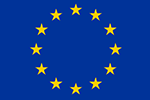VAT: registration and payment
Content
What is a VAT number?
The VAT number identifies traders and non-trading legal entities, and is necessary to carry out certain intra-community transactions.
It is the same as the tax identification number (NIF) with the prefix ES (denoting Spain) assigned to any relationship involving tax or with fiscal implications.
Who needs a VAT number?
With some exceptions, the following persons or entities are assigned a VAT number:
-
professionals and businesses established in or outside the Spanish VAT area, who carry out intra-EU supplies of goods or acquisitions of goods subject to VAT, whether or not these intra-EU acquisitions of goods are used in business or professional activities abroad;
-
professionals and businesses established in the Spanish VAT area who receive services provided by professionals or businesses not established there, for which they are taxable persons for the purposes of VAT (reverse charge mechanism);
-
professionals and businesses established in the Spanish VAT area who provide services which the location rules treat as having been provided in a Member State other than Spain, when the taxpayer is the recipient of these services;
-
legal persons not acting as businesses or professional traders, when they carry out intra-EU acquisitions of goods subject to VAT.
How to apply for a VAT number
Directly, when the person concerned applies for entry in the Intra-Community Operators Register (ROI), by completing the register entry or amendment form 036![]() .
.
Allocation of a VAT number is conditional on the trader being entered in the VIES (the VAT Information Exchange System).
IMPORTANT: Traders who have not properly completed form 036![]() and, specifically, not ticked box 582 to apply for entry in the ROI will not appear on the VIES.
and, specifically, not ticked box 582 to apply for entry in the ROI will not appear on the VIES.
Record-keeping obligations
Professional traders and businesses liable to pay VAT must generally keep the following records:
- sales ledger (record of invoices issued);
- bought ledger (record of invoiced received);
- investment assets register (record of capital goods);
- and a record of certain intra-EU transactions.
Those whose self-assessment period is monthly or who opt for this system must supply their VAT records via the AEAT website, by uploading their invoicing records.
More information on record-keeping obligations![]() (in English and Spanish).
(in English and Spanish).
Invoicing obligations
Professionals and businesses are obliged to issue an invoice and a copy invoice for goods and services provided in the course of their business, and to keep a copy of this invoice.
They must also issue an invoice if down-payments are made, except for intra-community supplies of exempted goods.
Professionals and businesses must in any case issue an invoice in the following cases:
- when the recipient is a business or professional trader and acting as such;
- when the other party in the transaction requests an invoice in order to exercise any fiscal rights;
- VAT-exempt exports of goods (other than in duty-free shops);
- intra-community supplies of goods not subject to VAT;
- when the recipient is a public authority or a legal person not acting as a professional trader or business;
- certain deliveries requiring installation or assembly prior to handover, when completed in the VAT area;
- online sales and supplies of goods liable to special taxes, when deemed to have taken place in the tax area.
More information on invoicing obligations![]() (in English and Spanish).
(in English and Spanish).
Payment of VAT
The settlement period is the calendar quarter.
However, the settlement period for the taxpayers listed below will be the calendar month:
- those whose turnover exceeded EUR 6 010 121 in the previous calendar year;
- those authorised to apply for refunds of balances in their favour at the end of each settlement period.
Form 303![]() must be used to fill in the tax return and pay the VAT:
must be used to fill in the tax return and pay the VAT:
- during the first 20 calendar days of the following month after the respective quarterly return period (30 days in the case of the fourth quarter), or
- during the first 30 calendar days of the following month if the period is monthly.
Taxable persons must also submit an annual summary declaration ( form 390![]() ).
).
Both forms must be submitted electronically with a recognised electronic certificate (electronic certificate or DNI-e) and the Cl@ve system.
EU citizens with a Spanish identifier (DNI, NIE, NIF L or NIF M) will be able to use their national digital identification (eIDAS identification). More information at Tax Agency: EU Citizens Access (eIDAS)










